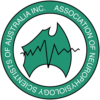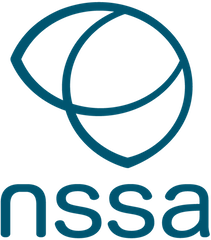
NSSA Blog Posts
Teah Mackay, a neurophysiologist at Alfred Hospital, shares insights into Congenital Insensitivity to Pain with Anhidrosis (CIPA), an exceedingly rare disorder where affected individuals cannot feel pain or sweat. With her extensive clinical experience, Teah highlights the profound challenges faced by those with CIPA and emphasizes the need for awareness within the medical community. Teah also underscores the importance of early detection and tailored management strategies, shedding light on the often-overlooked suffering of individuals living with CIPA.
In this post, Loretta provides insights into the setup process for outpatient EEG tests, emphasizing the importance of patient communication, identifying seizure triggers, assessing photosensitivity, and considering various factors influencing EEG findings, ultimately highlighting the complexities surrounding the diagnosis and management of epilepsy.
In the blog post for October, Ranitha recounts her experience of working as a neurophysiology scientist from an expat’s perspective, and the challenges she has to navigate through in her daily work life.
In this month’s blog post, Kim from the Royal Hobart Hospital describes the rollercoaster-like journey of a patient with Rasmussen’s Encephalitis.
This month, Kaelasha recounts the case of a patient with Reading Epilepsy, to explore some of the mechanisms of Reflex Seizures.
In this blog post, Isabella explores the tug-of-war relationship between anaesthetics and neurophysiology. She uses a case study to highlight the delicate balance between the use of volatile agents and the resulting neurophysiological signals.
In our first blog post for the year, Madeline writes about how diagnosing a patient with Epilepsy is not always straight forward and that sometimes we also need to consider PNES.
This November, Hari writes about using ultrasound to help diagnose those with Carpal Tunnel Syndrome.
Erica write about her travels as a Neurophysiology Scientist and how she has come to be in the research field in Montreal.
Thomas discusses the advantages and disadvantages of both in-house and private IONM services.
In July’s blog post, Ryan explores how not only could Broca’s area be resected without deficit, but how we could potentially relocate this vital language area using neuromodulation therapy.
In this blog post, Mansi talks about what it was like stepping into the VEM unit as a junior scientists. She includes some tips and tricks for other junior scientists.
In this months blog post, Bree discusses the idea of how scientific findings can be taken out of context by the media - making us question what are the facts.
Jared presents on Sturge Webber Syndrome and how if treated early, can help prevent ongoing complications such as epilepsy
Megan describes the difficulties of testing paediatric patients. She gives us some tips and tricks for those who are new to the field.
Georgia presents on the the difference between full field and half field VEPs and how we can be helping our provide better care to our patients.
In this November blog post, Miranda gives us a small glimpse into our next NSSA meetings topic - triaging EEG and how we can better care not only for our patients, but our staff too.
In this blog post, Maggie discusses how to notice symptoms of burnout and the ways we can counteract it.
Each month, a new blog post is written by a Neurophysiology Scientist. Interested in writing a blog and winning a prize? Contact us at neurophysiologysociety@outlook.com

The Royal Children’s Hospital presents on Infantile Spasms, Bipolar fusionless spinal surgery, and Benign EEG Variants.
NSSA meeting - November 2025
When: Thursday 20th November, 3pm-5pm.
Where: St Vincent’s Hospital Melbourne
NSSA Affiliations

'In the spirit of reconciliation the Neurophysiological Sciences Society of Australasia acknowledges the Traditional Custodians of country throughout Australia and their connections to land, sea and community. We pay our respect to their elders past and present and extend that respect to all Aboriginal and Torres Strait Islander peoples today.'


























In this blog post, Mark explores how COVID has effected us as Neurophysiology Scientists.